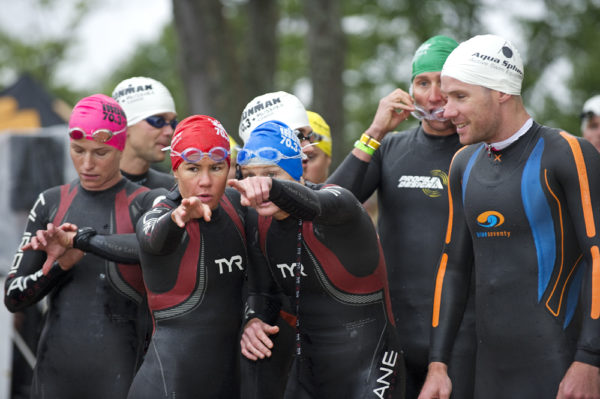
-By Ayesha Rollinson
“Should I stretch, or should I strengthen?” This is a question I get asked by swimmers multiple times a year. My answer is to focus on mobility—the ability to move or be moved freely and with ease. By working on developing shoulder mobility, you will automatically need to both strengthen and stretch because your aim will be to move (muscle contraction/ strength) freely (relaxation of antagonist muscle/ lengthen).
I love to bring it all back to physics. Making it a simple equation can help athletes embody the process. I think of mobility as is the absence of resistance, or more specifically, the uninhibited application of force over a chosen movement pathway.
Why and How does this affect swimming speed?
I am glad you asked.
First, let’s define speed:

If we focus on a single cycle in swimming ( two complete arm strokes) to increase speed you need to either:
1) Increase the distance covered in the same time. For example:

2) Cover the same distance in less time. For example:

Both of these situations are dependent on moving freely (reaching or gliding) and easily (without resistance).
Let’s look at situation 1 – increase the distance covered in the same amount of time:
To achieve this, you must be able to reach slightly farther ahead of you in the water while – and this is the critical part – maintaining the same body position and catch position. Keep in mind that just reaching will not move your body forward – this extra reach must then be translated into forward motion by an excellent catch and push.
To reach farther forward your shoulder, shoulder blade, and elbow all need to move freely and easily forward as well as rotationally. Try this at home. Reach up as far as you can. You will naturally rotate your body and shoulder to reach as high as possible. You will feel come muscles contracting and some muscles stretching. You may notice that it is a lack of strength or a lack of flexibility that prohibits your reach. If you can reach farther you then need the power to contract your muscles quickly and effectively over this longer distance.
Turning to situation 2 – cover the same distance in less time:
This may be the harder way to improve and maintain speed, in fact this is what sprinting is all about. Arm turnover (cadence) can be 1.5 times faster for sprinting as it is for distance disciplines. Sprinters cover about the same distance per stroke as non-sprinters, but they do it faster! The faster you want to make your arm cycle, the more powerful you need to be, the more powerful you are, the larger your muscles. The larger and more forceful your muscles, the more you have to focus on lengthening and loosening any antagonist muscles to ensure the contracting muscles can ‘move freely and easily’. Thus, mobility is also crucial for sprinters.
This way of increasing speed, however, puts a huge demand on your heart, muscle metabolism, oxygen consumption—in short, this method drastically increases workload and may be unsustainable over a longer duration. It can also put the swimmer at higher risk of a repetitive strain injury if a lot of distance is covered at this higher cadence. The increased power and force required for this method can be a trade off in buoyancy and energy efficiency because the shoulder and back are typically heavier and require more energy to remain on the surface of the water.
Whether you are a sprinter or a distance swimmer, it is worth spending time improving your shoulder mobility. Improvement should always be the goal, even if maintenance is the outcome.
My Mobility Tips:
Make use of door frames and anything else you can wrap your hands around!
Hanging
Shoulders support us in a hanging and swinging position. Kids hang, swing, climb on a daily basis but as adults we stop monkeying around. Inspired by one of my swimmers, Michael Pollanen, I have looked into this more and have started the practice of hanging and swinging when I can. It is important to keep the hanging intervals short to start, like 5-10 seconds. Hanging using various hand hold positions uses gravity and body weight to lengthen, while the shoulder is rotated. Adding swinging or even swinging while changing hand positions (gently!) forces different shoulder positions and improves both proprioception and muscle activation.
You will find that by hanging, your tendons and muscles will almost naturally figure out how to fire and work. Hanging should be attempted slowly and with a bit of caution at first! Our older, ground-bound bodies may require us to be patient. Daily practice of hanging off a door frame as you go through it for 5-10 seconds may help your swim speed.
Reach and Hold through all Ranges of Motion
Using a door frame, a railing, or anything that allows you to hold on while moving your body, gently hold the hand in one place while you move your body through all the ranges of motion possible for the shoulder. You will find that there are tight or sticky spots that you should pay more attention to.
Grab a Towel or Rope
Hold a towel down your back and hold on with both hands – one coming from the top, one coming from the bottom and gently pull in opposite directions.
In short, mobility matters and beginning to incorporate these exercises will help you master your swim.
*This article first appeared in the November 2020 Team Atomica Newsletter*